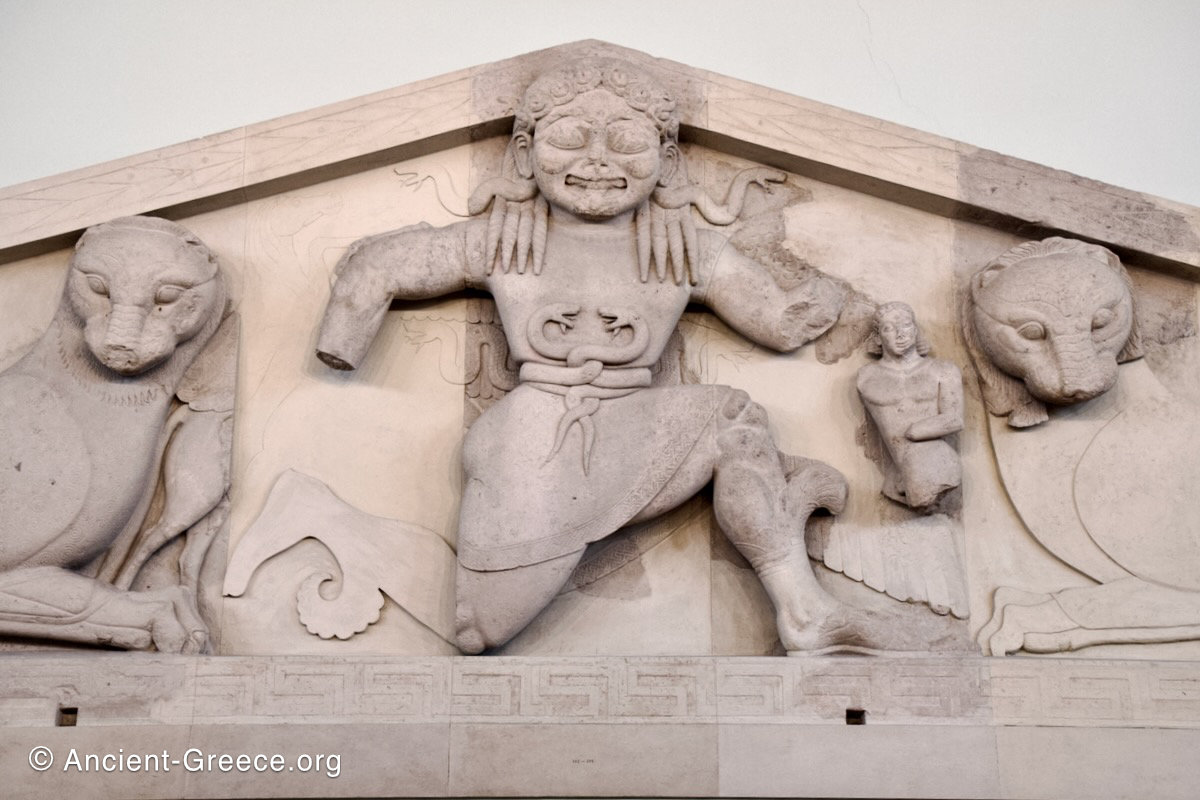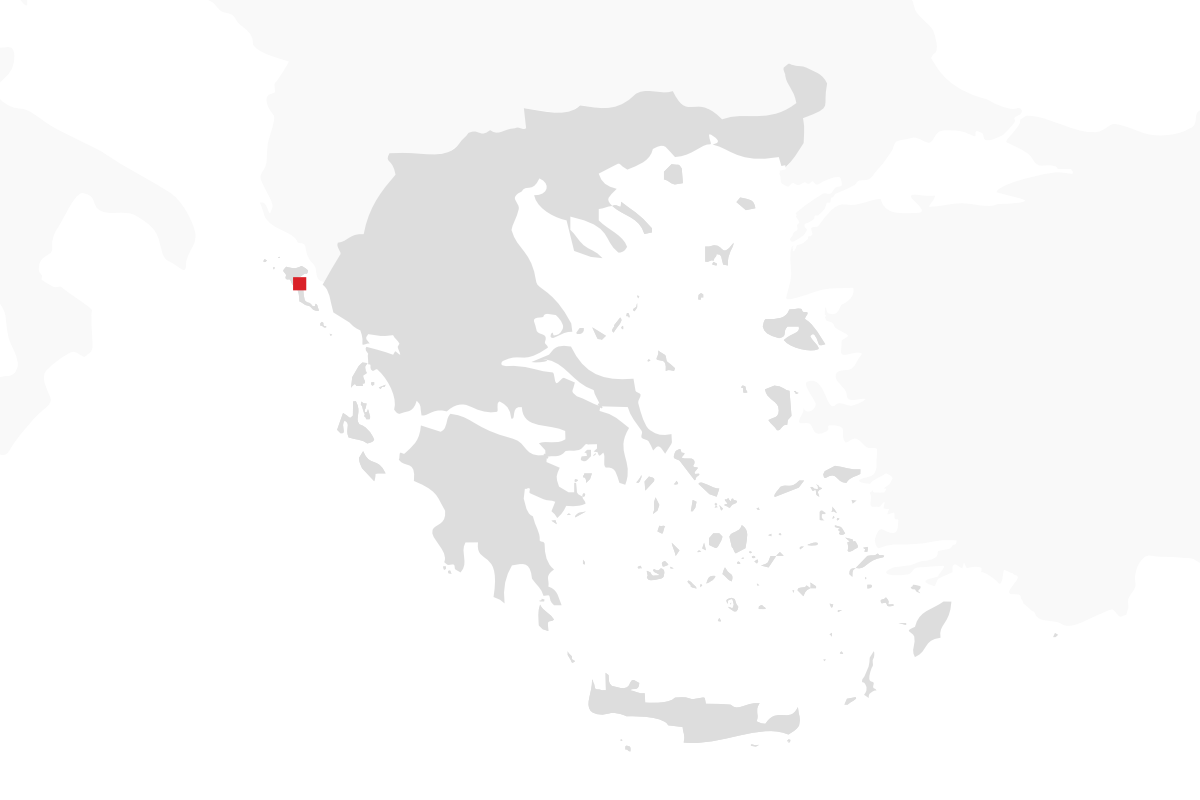
On this page:
The Archaeological Museum of Corfu (Αρχαιολογικό Μουσείο Κέρκυρας) exhibits artifacts found in excavations in Corfu island and the surrounding area, from the Stone Age until the Roman era.
Highlights from the exhibit include the archaic pediment sculptures with Gorgo from the temple of Artemis.
The Gorgo Pediment
The Gorgo pediment from the temple of Artemis. 590 – 580 BCE.
It depicts the myth of Gorgo (Medusa) giving birth at the moments she was beheaded by Perseus to the winged horse Pegasus and the young Chrysaor. In the pediment, Gorgo and her children appear all alive in a family portrait, flanked by two feline animals and scenes from the Titanomachy (or the conquest of Troy).
Architectural Fragments
Architectural fragments and a clay sima from temple of Artemis.
Part of an Archaic pediment from Figareto depicting a Dionysian symposium (Circa 500 BCE), and Archaic doric capitals, including a capital from a funerary column (first half 6th c. BCE).
Sculpture
Top row, left to right:
- Kouros. Circa 530 BCE.
- Three Cycladic statuettes. 3200 – 2800 BCE.
- Archaic lion statue. Found near Menekrates’ tomb. late 7th c. BCE.
- Hellenistic statue of Aphrodite’s head fragment.
Second row:
- Statue fragment. Aphrodite in dress rests on a statuette of a hermaphrodite. End of 2nd c. BCE.
- Statue fragment of Aphrodite. 2nd c. CE.
- Statue fragment of Cupid. 250 BCE.
- Apollo statuette. 2nd c. CE. Copy of a 5th century BCE statue by Phidias. Apollo Parnopios.
Third row:
- Marble portrait of Thucydides. Roman copy of a 4th c. BCE original.
- Relief sculpture fragment depicting a hoplite in battle. from the Temple of Artemis first phase. Circa 590 – 570 BCE.
- Funerary column with inscription from the grave of Lexeiatas. 5th c. BCE. Later, in the 4th c. BCE it was repurposed as a horos (border stone) of the Dioscuri sanctuary.
- Inscribed border stone from the temple of Apollo Pythios. Late 5th c. BCE.
Artifacts
Top row, left to right:
- Mesolithic flaked stones found in Corfu. Greece.
From Sidari: cores, flakes, blades, burins, points, flake with truncations, truncation, micro-tranche, scrapers, denticulate, core tool, microliths.
From Corfu-Mathraki-Diaplo: Levalois flakes, blades, Levallois points, Mousterian point, pseudo-Levallois point, leaf points. - Cycladic stone vessel. Circa 2800 – 2300 BCE.
Second row:
- Pottery shards from Corfu, Greece.
Early and middle Bronze Age pottery. Classical age pottery (4th-3d c. BCE). Black glazed Laconian oinochoe. 6th c. BCE.
Third row:
- Silver coins from Stratia, Corfu, Greece. On the left: Stater (στατήρ) coins with depiction of a cow nursing a calf. End of 6th c. to beginning of 5th c. BCE.
Fourth row:
- Stone Mason’s profile pattern of a cymatium. Made of lead.
A profile pattern for stone masons to use as a guide when carving architectural elements. - Proxeny inscribed tablets.
- Metal armor found in a grave in Prodromi site of Paramythia in Thesprotia, Greece. 4th c. BCE.
- Restored metal helmet.


















































